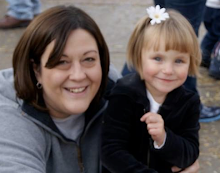
Note to my parents! Our pediatrician recommended Bag Balm for Diaper Rash. This is a very heavy petroleum based product with an antiseptic. It was created for farm animals of all things. It works PHENOMINALLY well. The antiseptic heals existing blisters and redness almost immediately and completely in 24 hours or so. The petroleum base helps to block out urine and bm's so that they never get a chance at the skin. It works far better that vaseline or A&D and it is MUCH, MUCH better than all of the zinc based products.
A diaper rash is a skin problem that develops in the area beneath an infant's diaper.
You may notice the following in your child's diaper area:
- Bright red rash that gets bigger
- Fiery red and scaly areas on the scrotum and penis in boys
- Red or scaly areas on the labia and vagina in girls
- Pimples, blisters, ulcers, large bumps, or pus-filled sores
- Smaller red patches (called satellite lesions) that grow and blend in with the other patches
Diaper rashes usually do NOT spread beyond the edge of the diaper.
The best treatment for a diaper rash is to keep the diaper area clean and dry. This will also help prevent new diaper rashes.
- Always wash your hands after changing a diaper
- Ask your doctor if a diaper rash cream would be helpful. Zinc oxide or petroleum jelly-based products help keep moisture away from baby's skin when applied to completely clean, dry skin
- Avoid using wipes that have alcohol or perfume. They may dry out or irritate the skin more
- Do NOT use corn starch on your baby's bottom. It can make a yeast diaper rash worse
- Do NOT use talc (talcum powder). It can get into your baby's lungs
- Change your baby's diaper often, and as soon as possible after the baby urinates or has a bm
- Lay your baby on a towel without a diaper on whenever possible. The more time the baby can be kept out of a diaper, the better
- Pat the area dry or allow to air-dry
- Put diapers on loosely. Diapers that are too tight don't allow enough air and may rub and irritate the baby's waist or thighs
- Using highly absorbent diapers helps keep the skin dry and reduces the chance of getting an infection
If you use cloth diapers:
- Avoid plastic or rubber pants over the diaper. They do not allow enough air to pass through Use a cloth diaper wrap instead.
- Do NOT use fabric softeners or dryer sheets. They may make the rash worse
- When washing cloth diapers, rinse 2 or 3 times to remove all soap if your child already has a rash or has had one before
MEDICATIONS:
Topical antifungal skin creams and ointments will clear up infections caused by yeast. Nystatin, miconazole, clotrimazole, and ketaconazole are common ones.
Sometimes a mild, topical corticosteroid cream may be used. Talk to your doctor before trying this on your baby.
Diaper rashes are common in babies until they are potty trained. They may be noticed more when babies begin to eat solid foods. Acidic foods can cause more rashes. Fruit, juices, tomato based products or too many spices in babies food. Children with sensitive skin may suffer more often from rashes.
Diaper rashes caused by infection with a yeast or fungus called Candida are very common in children. Candida is found everywhere in the environment. It grows best in warm, moist places, such as under a diaper. A yeast-related diaper rash is more likely to occur in babies who:
- Are not kept clean and dry
- Are taking antibiotics, or whose mothers are taking antibiotics while breast feeding
- Have more frequent stool
- Boys are just as suseptible to yeast infections as girls are
Other causes of diaper rashes include:
- Acids in the stool (seen more often when the child has diarrhea)
- Ammonia (produced when bacteria break down urine)
- Diapers that are too tight or rub the skin
- Reactions to soaps and other products used to clean cloth diapers
- Too much moisture
- Bubble baths can cause and irritate rashes
Yeast or Candida-related diaper rashes often can be diagnosed by the appearance alone. The KOH test can confirm a Candida diagnosis.
- Secondary infection
Call your health care provider if:
- The rash gets worse or does not go away in 2-3 days
- The rash spreads to the abdomen, back, arms, or face
- You notice pimples, blisters, ulcers, large bumps, or pus-filled sores
- Your baby also has a fever
- Your baby is taking an antibiotic and develops a bright red rash with spots at its edges. This might be a yeast infection
- Your baby develops a rash during the first 6 weeks of life










No comments:
Post a Comment